-
 Bitcoin
Bitcoin $117900
-0.22% -
 Ethereum
Ethereum $3620
1.45% -
 XRP
XRP $3.392
-1.67% -
 Tether USDt
Tether USDt $1.001
-0.01% -
 BNB
BNB $741.5
1.66% -
 Solana
Solana $177.7
0.35% -
 USDC
USDC $0.9999
0.00% -
 Dogecoin
Dogecoin $0.2524
4.26% -
 TRON
TRON $0.3190
-1.74% -
 Cardano
Cardano $0.8331
1.49% -
 Hyperliquid
Hyperliquid $44.73
-0.94% -
 Stellar
Stellar $0.4609
-0.52% -
 Sui
Sui $3.844
2.54% -
 Chainlink
Chainlink $18.54
2.73% -
 Hedera
Hedera $0.2685
2.60% -
 Bitcoin Cash
Bitcoin Cash $522.6
1.91% -
 Avalanche
Avalanche $24.57
4.49% -
 Shiba Inu
Shiba Inu $0.00001508
2.57% -
 Litecoin
Litecoin $111.2
9.56% -
 UNUS SED LEO
UNUS SED LEO $8.989
0.15% -
 Toncoin
Toncoin $3.185
-0.08% -
 Polkadot
Polkadot $4.391
3.82% -
 Uniswap
Uniswap $10.34
3.56% -
 Monero
Monero $327.3
1.09% -
 Ethena USDe
Ethena USDe $1.001
-0.02% -
 Bitget Token
Bitget Token $4.953
1.19% -
 Pepe
Pepe $0.00001351
2.67% -
 Dai
Dai $1.000
0.01% -
 Aave
Aave $320.9
0.41% -
 Bittensor
Bittensor $415.9
1.00%
What does WR above the zero axis represent? What does WR below the zero axis mean?
The Williams %R indicator helps traders identify overbought and oversold conditions in crypto markets, signaling potential reversals when above or below the zero axis.
May 22, 2025 at 11:56 pm
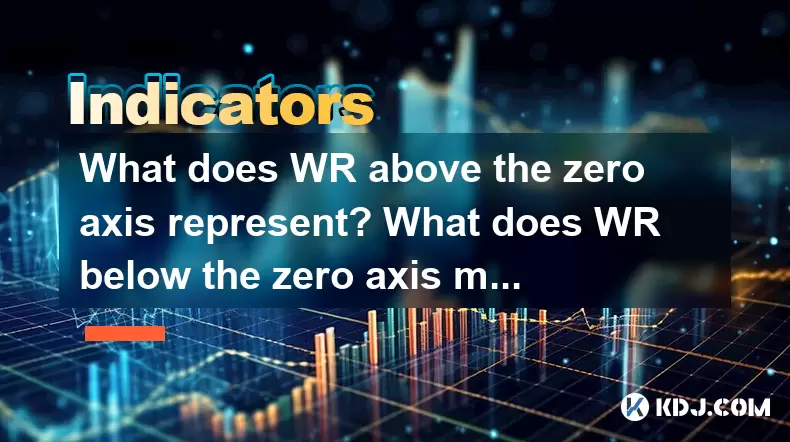
In the realm of cryptocurrency trading, technical analysis plays a crucial role in understanding market trends and making informed decisions. One of the key indicators used by traders is the Williams %R (WR), a momentum indicator that helps identify overbought and oversold conditions in the market. This article will delve into the significance of the WR when it is positioned above or below the zero axis, providing a comprehensive understanding of its implications for cryptocurrency trading.
Understanding the Williams %R Indicator
The Williams %R is a technical indicator developed by Larry Williams to measure the level of the close relative to the high-low range over a given period, typically 14 days. It is expressed as a percentage, ranging from 0 to -100. The formula for calculating the WR is:
[ \text{WR} = \frac{\text{Highest High} - \text{Close}}{\text{Highest High} - \text{Lowest Low}} \times -100 ]
Where:
- Highest High is the highest price in the look-back period.
- Lowest Low is the lowest price in the look-back period.
- Close is the closing price of the current period.
WR Above the Zero Axis
When the WR is above the zero axis, it indicates a condition where the closing price of the cryptocurrency is closer to the highest high of the look-back period. This situation suggests that the market may be overbought. An overbought condition implies that the price has risen to a level where a reversal or a pullback is likely to occur. Traders often use this as a signal to consider selling or taking profits.
Key Points to Consider:
- Confirmation: Traders should look for additional confirmation from other indicators, such as the Relative Strength Index (RSI) or moving averages, before making trading decisions based solely on the WR.
- Time Frame: The significance of the WR being above the zero axis can vary depending on the time frame being analyzed. Shorter time frames may produce more frequent signals, while longer time frames may provide more reliable signals.
WR Below the Zero Axis
Conversely, when the WR is below the zero axis, it signifies that the closing price of the cryptocurrency is closer to the lowest low of the look-back period. This condition suggests that the market may be oversold. An oversold condition indicates that the price has fallen to a level where a reversal or a bounce back is likely to occur. Traders may see this as an opportunity to buy or enter long positions.
Key Points to Consider:
- Divergence: Traders should watch for divergence between the WR and the price action. If the price continues to decline while the WR starts to rise, it may indicate a potential bullish reversal.
- Volatility: The effectiveness of the WR as an indicator can be influenced by the volatility of the cryptocurrency being analyzed. Highly volatile assets may produce more false signals.
Interpreting WR in Different Market Conditions
The interpretation of the WR can vary depending on the specific market conditions. In a bullish market, the WR being above the zero axis might not necessarily indicate an immediate sell signal, as the overall trend may continue to support higher prices. Conversely, in a bearish market, the WR being below the zero axis might not always be a clear buy signal, as the downward trend could persist.
Considerations for Different Market Conditions:
- Trend Strength: The strength of the prevailing trend should be considered when interpreting the WR. Strong trends may override the signals provided by the WR.
- Market Sentiment: Broader market sentiment and external factors can influence the effectiveness of the WR. Traders should stay informed about news and events that could impact the cryptocurrency market.
Practical Application of WR in Trading
To effectively use the WR in trading, traders can follow these steps:
- Select a Time Frame: Choose a time frame that aligns with your trading strategy. Common time frames include 14 days for short-term trading and 28 days for longer-term analysis.
- Calculate the WR: Use the formula provided earlier to calculate the WR for the selected time frame.
- Monitor the WR: Regularly monitor the WR to identify when it crosses above or below the zero axis.
- Combine with Other Indicators: Use other technical indicators to confirm the signals provided by the WR. This can include the RSI, Moving Average Convergence Divergence (MACD), or trend lines.
- Set Trading Rules: Establish clear rules for entering and exiting trades based on the WR. For example, you might decide to sell when the WR moves above the zero axis and buy when it moves below the zero axis.
Examples of WR in Action
To illustrate the practical use of the WR, consider the following examples:
- Example 1: A trader observes that the WR for Bitcoin has moved above the zero axis after a significant rally. The trader decides to sell a portion of their holdings, anticipating a potential pullback. The trader uses the RSI to confirm the overbought condition and sets a stop-loss order to manage risk.
- Example 2: The WR for Ethereum drops below the zero axis during a market correction. A trader sees this as an opportunity to buy, expecting a bounce back. The trader waits for confirmation from the MACD, which shows a bullish crossover, before entering a long position.
Frequently Asked Questions
Q1: Can the WR be used as a standalone indicator for trading decisions?
While the WR can provide valuable insights into market conditions, it is generally recommended to use it in conjunction with other technical indicators to increase the reliability of trading signals. Relying solely on the WR may lead to false signals, especially in volatile markets.
Q2: How often should the WR be recalculated?
The frequency of recalculating the WR depends on the time frame being used for analysis. For short-term trading, the WR should be recalculated daily or even intraday. For longer-term analysis, weekly or monthly recalculations may be sufficient.
Q3: Does the WR work equally well for all cryptocurrencies?
The effectiveness of the WR can vary depending on the specific cryptocurrency being analyzed. Highly volatile cryptocurrencies may produce more false signals, while more stable assets might provide more reliable WR readings. Traders should consider the unique characteristics of each cryptocurrency when using the WR.
Q4: Can the WR be used for predicting long-term trends?
The WR is primarily a momentum indicator used for identifying overbought and oversold conditions in the short to medium term. While it can be part of a broader analysis, it is not typically used as a standalone tool for predicting long-term trends. For long-term trend analysis, traders might consider using other indicators such as moving averages or trend lines.
Disclaimer:info@kdj.com
The information provided is not trading advice. kdj.com does not assume any responsibility for any investments made based on the information provided in this article. Cryptocurrencies are highly volatile and it is highly recommended that you invest with caution after thorough research!
If you believe that the content used on this website infringes your copyright, please contact us immediately (info@kdj.com) and we will delete it promptly.
- WLFI Token Trading Approved: From Trump Ties to Community Votes
- 2025-07-20 09:10:12
- CoinDCX's $44.2 Million Security Breach: A Wake-Up Call for Crypto Exchanges
- 2025-07-20 08:30:13
- Trump, WLFI, and Token Release: A New York Minute on Crypto
- 2025-07-20 08:30:13
- Ripple's RLUSD: The Bluechip Stablecoin Set to Disrupt the Market?
- 2025-07-20 08:50:11
- Bitcoin Price Action: Is Weakening Demand on the Horizon?
- 2025-07-20 08:50:11
- Ripple's RLUSD: Top-Ranked Stablecoin Shaking Up the Market
- 2025-07-20 08:55:12
Related knowledge
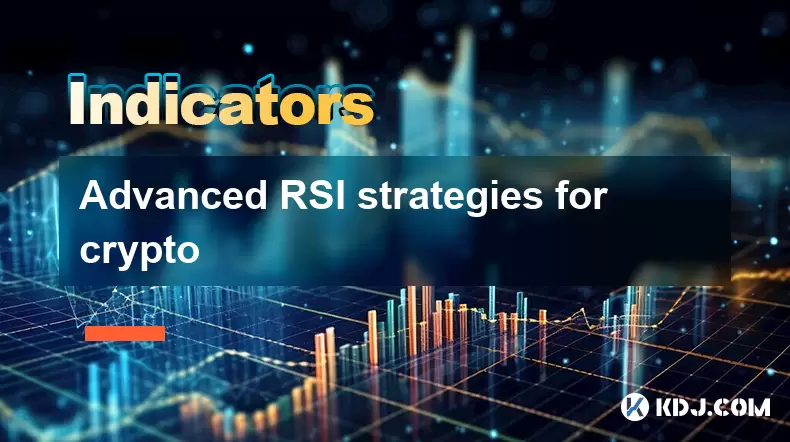
Advanced RSI strategies for crypto
Jul 13,2025 at 11:01am
Understanding the Basics of RSI in Cryptocurrency TradingThe Relative Strength Index (RSI) is a momentum oscillator used to measure the speed and chan...
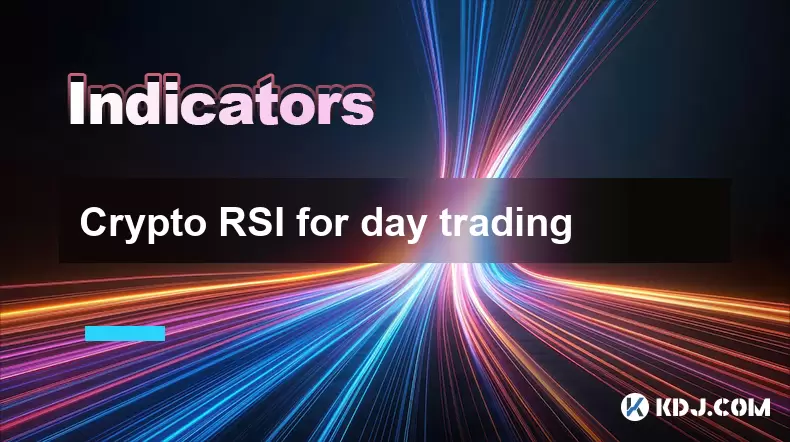
Crypto RSI for day trading
Jul 12,2025 at 11:14am
Understanding RSI in the Context of Cryptocurrency TradingThe Relative Strength Index (RSI) is a momentum oscillator used to measure the speed and cha...
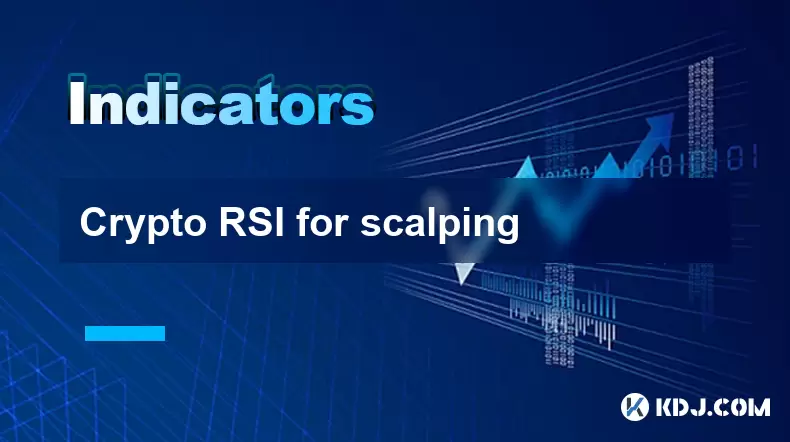
Crypto RSI for scalping
Jul 12,2025 at 11:00pm
Understanding RSI in the Context of Crypto TradingThe Relative Strength Index (RSI) is a momentum oscillator widely used by traders to measure the spe...
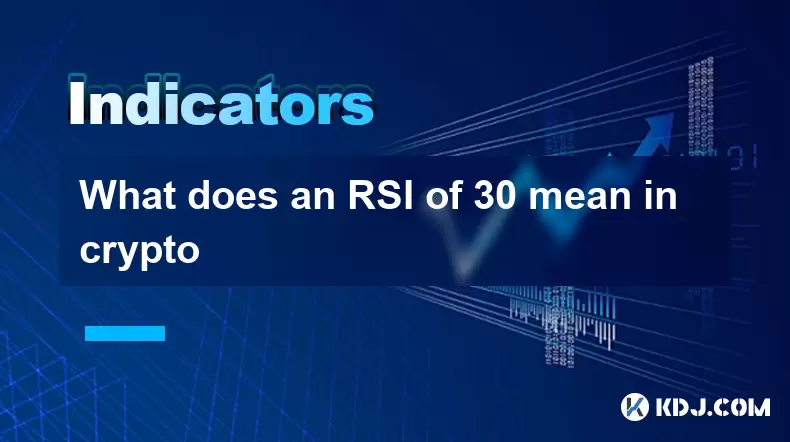
What does an RSI of 30 mean in crypto
Jul 15,2025 at 07:07pm
Understanding RSI in Cryptocurrency TradingRelative Strength Index (RSI) is a momentum oscillator widely used in cryptocurrency trading to measure the...
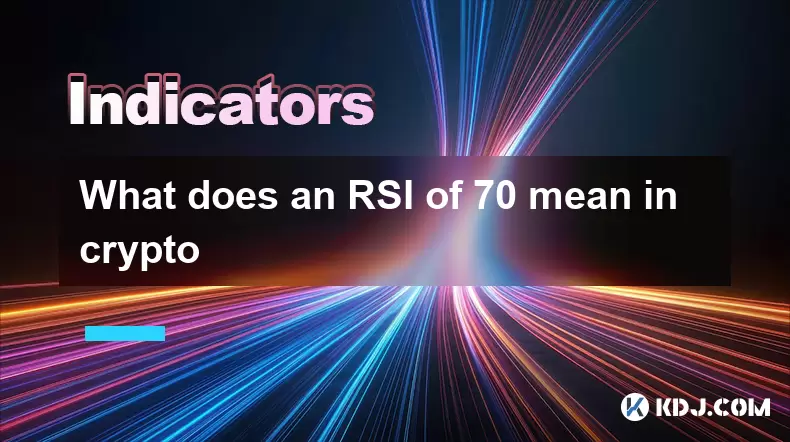
What does an RSI of 70 mean in crypto
Jul 13,2025 at 06:07pm
Understanding the RSI Indicator in Cryptocurrency TradingThe Relative Strength Index (RSI) is a widely used technical analysis tool that helps traders...
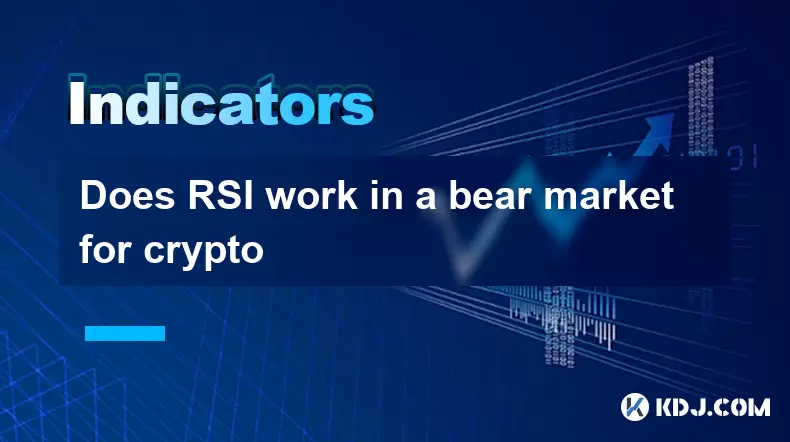
Does RSI work in a bear market for crypto
Jul 16,2025 at 01:36pm
Understanding RSI in Cryptocurrency TradingThe Relative Strength Index (RSI) is a momentum oscillator used by traders to measure the speed and change ...

Advanced RSI strategies for crypto
Jul 13,2025 at 11:01am
Understanding the Basics of RSI in Cryptocurrency TradingThe Relative Strength Index (RSI) is a momentum oscillator used to measure the speed and chan...

Crypto RSI for day trading
Jul 12,2025 at 11:14am
Understanding RSI in the Context of Cryptocurrency TradingThe Relative Strength Index (RSI) is a momentum oscillator used to measure the speed and cha...

Crypto RSI for scalping
Jul 12,2025 at 11:00pm
Understanding RSI in the Context of Crypto TradingThe Relative Strength Index (RSI) is a momentum oscillator widely used by traders to measure the spe...

What does an RSI of 30 mean in crypto
Jul 15,2025 at 07:07pm
Understanding RSI in Cryptocurrency TradingRelative Strength Index (RSI) is a momentum oscillator widely used in cryptocurrency trading to measure the...

What does an RSI of 70 mean in crypto
Jul 13,2025 at 06:07pm
Understanding the RSI Indicator in Cryptocurrency TradingThe Relative Strength Index (RSI) is a widely used technical analysis tool that helps traders...

Does RSI work in a bear market for crypto
Jul 16,2025 at 01:36pm
Understanding RSI in Cryptocurrency TradingThe Relative Strength Index (RSI) is a momentum oscillator used by traders to measure the speed and change ...
See all articles

























































































